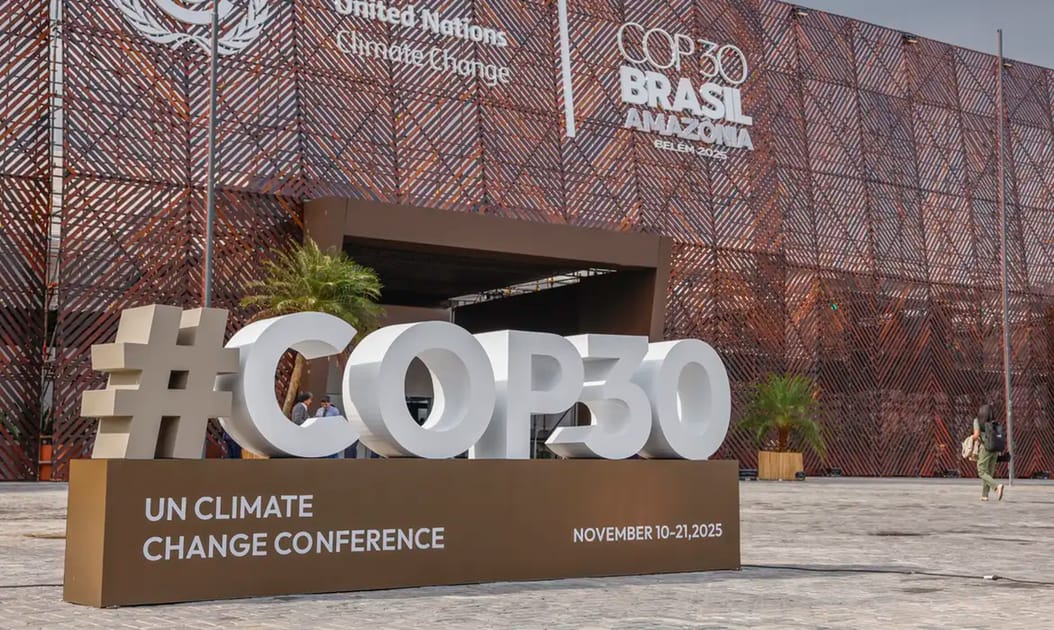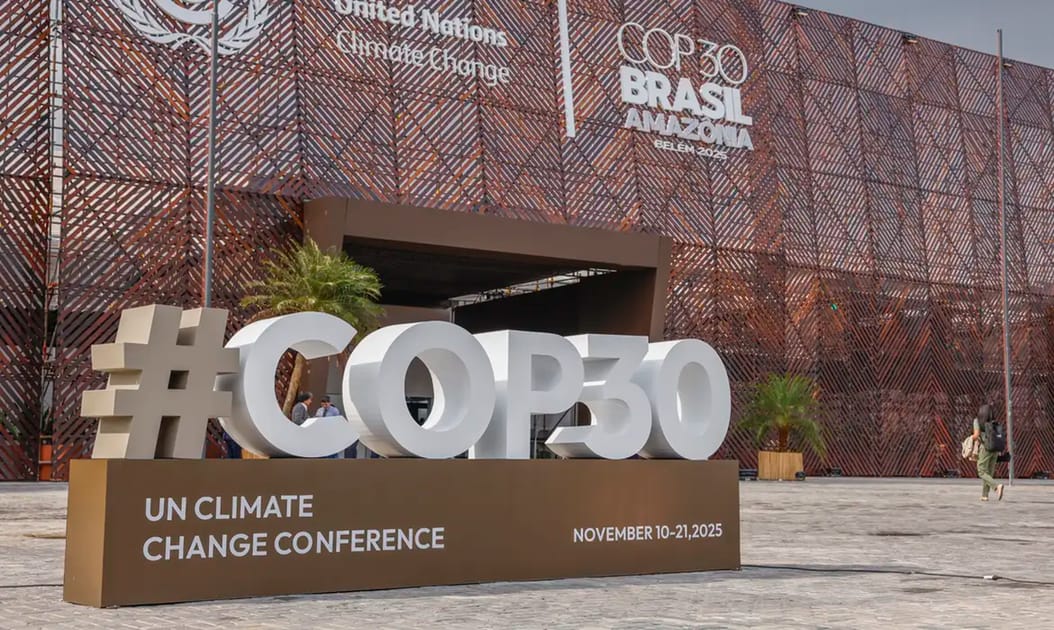- UGREEN
- Posts
- COP30 and its final conclusions. Could the Scandinavian dream become a Brazilian reality?
COP30 and its final conclusions. Could the Scandinavian dream become a Brazilian reality?
Your UGREEN News is live!

News
COP30 in Belém: Capital, Climate, and Conflicting Interests

Photo: Tânia Rego/Agência Brasil
The 30th United Nations Climate Conference (COP30), held in Belém in November 2025, confirmed a shift in climate negotiations toward financial logic and market control. Discussions around “saving the planet” gave way to negotiations focused on economic survival in a warming world.
Climate Finance: At the Core of the Negotiations
The main outcome of COP30 was the definition of the New Collective Quantified Goal (NCQG). The agreement sets two financing targets:
US$300 billion per year in public finance until 2035.
US$1.3 trillion per year to be leveraged through private sector and multilateral banks.
In practice, developed countries secured a limited fiscal commitment. Most of the responsibility was shifted to private investors, increasing financial risk and cost of capital for Global South countries. African and small island states criticized the model, arguing that loan-based financing deepens dependency and weakens adaptive capacity.
The agreement institutionalizes a market-based approach to climate action. Mitigation and adaptation must now deliver financial returns to attract investment. Technical and economic considerations replaced notions of global solidarity.
Fossil Fuels: Economic Interests Block Consensus
Once again, the final UN text did not include the term “phase-out” of fossil fuels. Saudi Arabia and Russia led a successful effort to block the language. Their strategy was to separate the debate on emissions from energy sources.
These countries used their leverage over the finance package to ensure protection of their fossil fuel export models. The final outcome preserved their long-term revenue interests and prevented regulatory progress at the multilateral level.
Faced with institutional paralysis, some countries launched parallel initiatives. Brazil and Colombia presented a voluntary transition roadmap outside the UN framework. This reflects the emergence of climate “coalitions of the willing,” advancing without requiring global consensus.
Amazon as an Asset: The Creation of the TFFF
Brazil’s main contribution was the launch of the Tropical Forests Forever Facility (TFFF), a financial mechanism that compensates forest preservation based on performance.
Payment per hectare: US$4 annually.
Initial capital: US$6.7 billion in sovereign guarantees.
Bond issuance based on conservation-related cash flows.
20% of funds are directly allocated to Indigenous organizations.
The monetization of forest preservation changes the power dynamics in climate finance. The state is no longer the sole intermediary. Local communities gain direct access to climate capital and play a more central role in land stewardship.
Trade Policy: Conflict Between Global South and EU
The BASIC group (Brazil, South Africa, India, China) openly challenged the European Union’s Carbon Border Adjustment Mechanism (CBAM). They denounced the measure as green protectionism, designed to shield European industry from international competition under the guise of climate regulation.
As a result, the final text of COP30 formally acknowledged “unilateral trade measures” as a legitimate area of climate negotiation. Climate policy is now officially linked to trade and industrial policy disputes.
Carbon Markets: New Regulation under Article 6.4
COP30 approved the legal and operational framework for Article 6.4, which establishes a global carbon credit market under UN oversight. The new rules create legal certainty for transactions and investor liability:
Defined responsibilities for carbon reversals (e.g., wildfires).
Mandatory insurance via buffer pools.
Clear methodologies for certification and monitoring.
These rules aim to secure investor confidence and allow countries and corporations to use carbon offsets as part of their climate strategies. The framework is expected to attract speculative capital to carbon removal and forest conservation projects.
Final Assessment: The Material Structure of the Climate Crisis
COP30 confirmed that climate transition depends primarily on capital allocation. The approved funding (US$300 billion) represents only a fraction of what is needed. Poorer countries will face higher debt or remain underfunded.
The fossil fuel sector retains political and institutional power. The global energy transition will occur selectively, where it is financially viable, not through global policy enforcement.
The Belém Declaration on Green Industrialization signals a shift in strategy by the Global South. These countries no longer accept the role of raw material exporters. Their objective is to develop local processing capacity for critical minerals and biomass.
COP30 did not deliver a moral breakthrough. It functioned as a negotiation over contracts and financial risk in a world facing rising temperatures and declining cooperation.
Summary Table
Stakeholder | Primary goal | Outcome Achieved |
|---|---|---|
Saudi Arabia / Russia | Protect fossil fuel revenues | Blocked “phase-out” language |
Developed Countries | Limit fiscal exposure | US$300 billion public ceiling, private-led |
G77 + China | Secure public climate finance | Outcome mostly loan-based or private |
Forest Countries (e.g. Brazil) | Monetize forest conservation | Launched the TFFF mechanism |
Financial Sector | Create new markets for green assets | Expanded carbon and forest-linked markets |
UGREEN
This is Your Final Opportunity to Get Access to ALL UGREEN Courses in a Single, Lifetime Package
This Thursday, November 27, UGREEN opens BATCH 4, the final chance to access all UGREEN courses in one exclusive offer for those who want to implement real sustainability in their projects.
What’s Included?
Over 30 complete courses focused on applied sustainability in:
✅ Architecture
✅ Urban Planning
✅ Sustainable Construction
All courses are included in a lifetime access package, no expiration, no renewals.
10% of all profits will be directed to social impact initiatives.
The special price will be revealed this Wednesday!
This Is the Final Opportunity
BATCH 4 opens at 9:00 AM this Thursday.
UGREEN has never made this offer in its 9 years of operation.
Video
Between the Scandinavian Dream and Brazilian Reality
In recent decades, the Nordic countries have become international benchmarks in sustainable urbanism and architecture. Cities like Oslo, Copenhagen, and Stockholm frequently top global quality of life rankings, with urban projects praised for their integration with nature, energy efficiency, and functional design.
These results are essentially the outcome of political and economic decisions made throughout the 20th century. There was public land control, strong state investment in quality housing, and a progressive tax system that financed urban infrastructure for all social classes. This made it possible to design cities with a focus on collective well-being and social equity.
In Brazil, the context is entirely different. Urban development has been shaped by exclusion. The 1850 Land Law, the legacy of slavery, and real estate speculation created a fragmented and unequal urban landscape. Favelas, gated communities, unequal infrastructure, and social segregation are direct results of this history. Housing is treated as a financial asset rather than a public service.
Importing urban solutions from such contrasting contexts can lead to distortions rather than improvements. What works in Norway may fail in Brazil if we ignore the structural foundations that support each model.
Want to dive deeper into the topic?
Watch the full video and understand why Nordic architecture cannot be replicated in Brazil without first considering our political and economic foundations.
Disclaimer: The video is in Brazilian Portuguese, but simultaneous translation and subtitles are available in multiple languages.
Reply